
Though Veterans Day is designed to remind all Americans of the sacrifices made by military servicemembers, there’s at least one group that wouldn’t have needed that reminder: the War Brides of World War II, women who had married U.S. military personnel while those men had been stationed overseas. Those couples were separated by the war’s end but in 1945 the U.S. responded to their plight by passing the War Brides Act, which opened up a three-year period during which the non-American spouses and children of those who served during World War II could legally immigrate to the United States. More than 100,000 women and children made that trip.
One of the ways they did so was on board the Queen Mary, which transported 12,886 G.I. brides and children to the U.S. and 10,000 to Canada, according to Cunard, the ship’s operator. Though the trip lasted only a few days and the war had ended, it was still a daunting voyage for a ship full of people who had decided to leave their homelands to live with men whose peacetime lives were still a mystery. One of the ways they dealt with that situation was by contributing to and reading an on-board newspaper, Wives Aweigh, a copy of which can be read here. (View in “full screen” mode to read.)
Throughout the war, ships had published daily programs keeping passengers up to date on events on board as well as the news they might otherwise miss, says Cunard historian Michael Gallagher, and Wives Aweigh would have been a natural extension of that practice, with ship employees and war brides working together to create the content. With world news, facts about the ship, public service announcements, cooking tips, poetry and information about the places to which the brides were bound, the newsletter was published daily during the voyage. “It was similar to the daily program concept,” Gallagher says, “but it was also developed to prepare these people for their new lives.”
This particular copy was preserved by British bride June Allen. An 18-year-old young mother when she made the voyage alongside about 1,700 other brides, she is now a resident of Anderson, Ind., with seven great-grandchildren. After her husband passed away in 2012, she tells TIME, she decided to go through some of the boxes of papers in their house. Upon opening one of the mysterious boxes, she found memorabilia from her time on the Queen Mary: the tags she and her eldest son wore during the trip, menus from shipboard meals, paperwork from the journey and copies of Wives Aweigh. “I’d saved it all those years and I’d forgot I even owned it,” she says. “I figured that if my children found the box one day they would just throw it out, it wouldn’t mean anything to them, so that’s when I called the Queen Mary and said I wanted to donate it to their museum.”
Allen decided to put seeing the Queen Mary again on her “bucket list” and has since visited the ship in California several times. This week, however, she’s doing one better: she’s currently crossing the Atlantic once again, this time on board the Queen Mary 2.
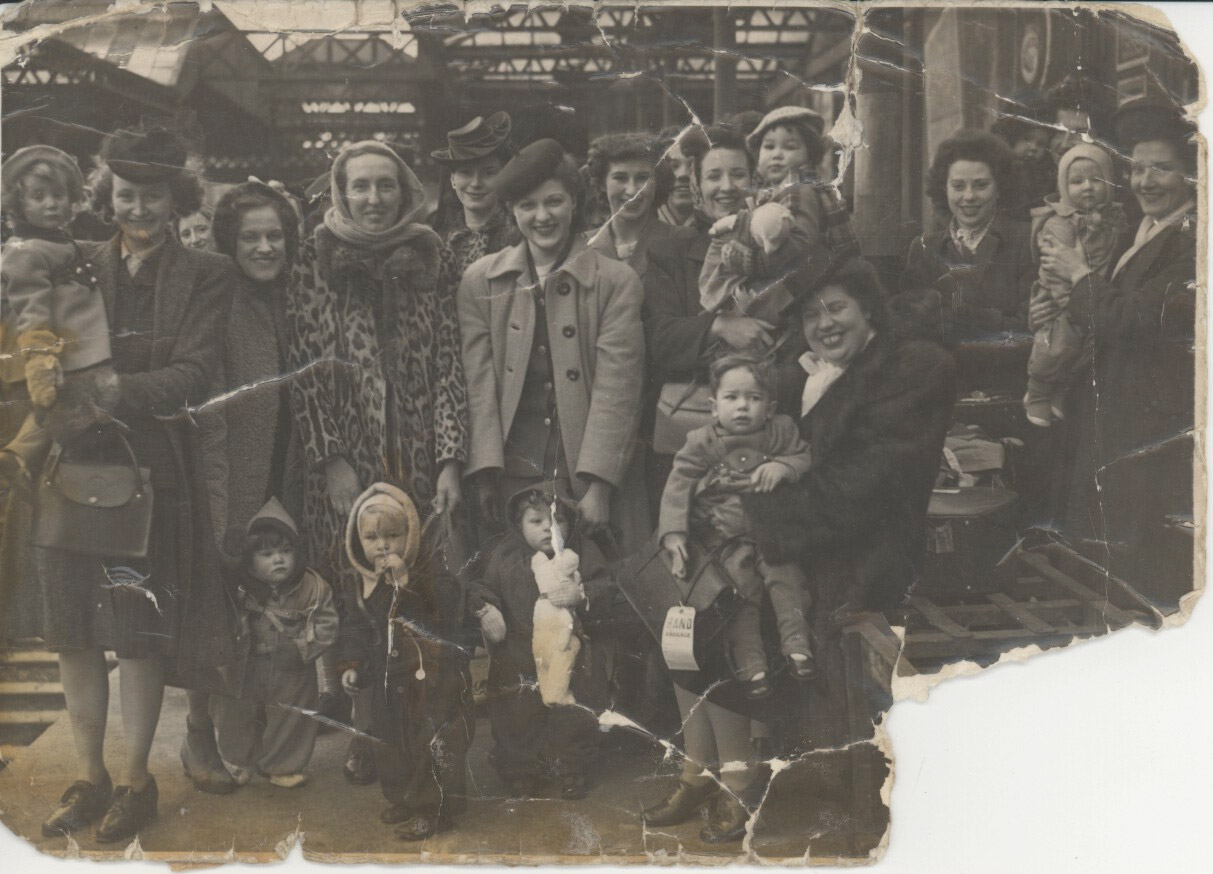
Read more about the return to civilian service for transportation including the Queen Mary, here in the TIME Vault: Just Pack Your Bag, But…
Read more about Veterans Day: How Veterans Day Came to Be
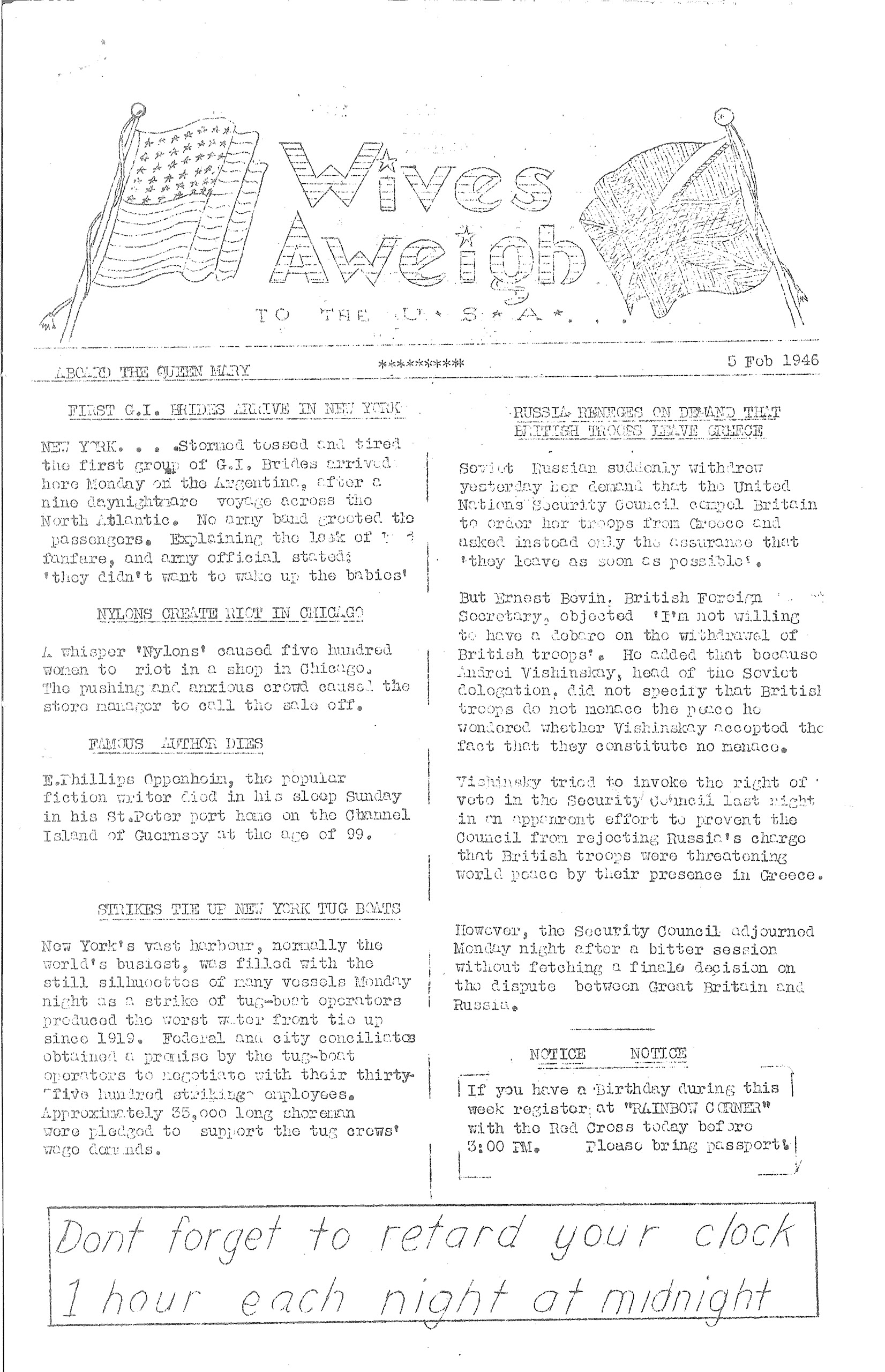
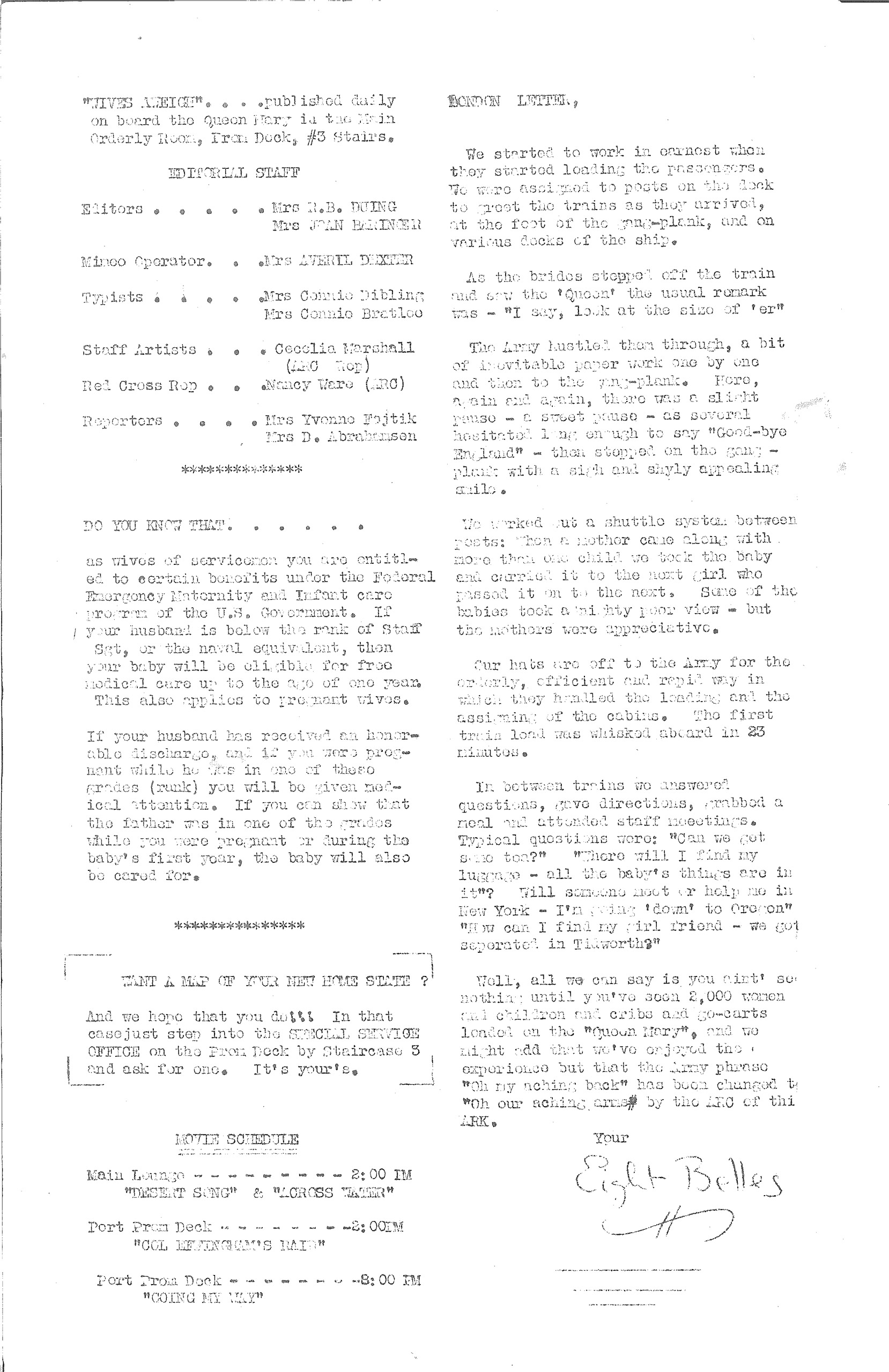
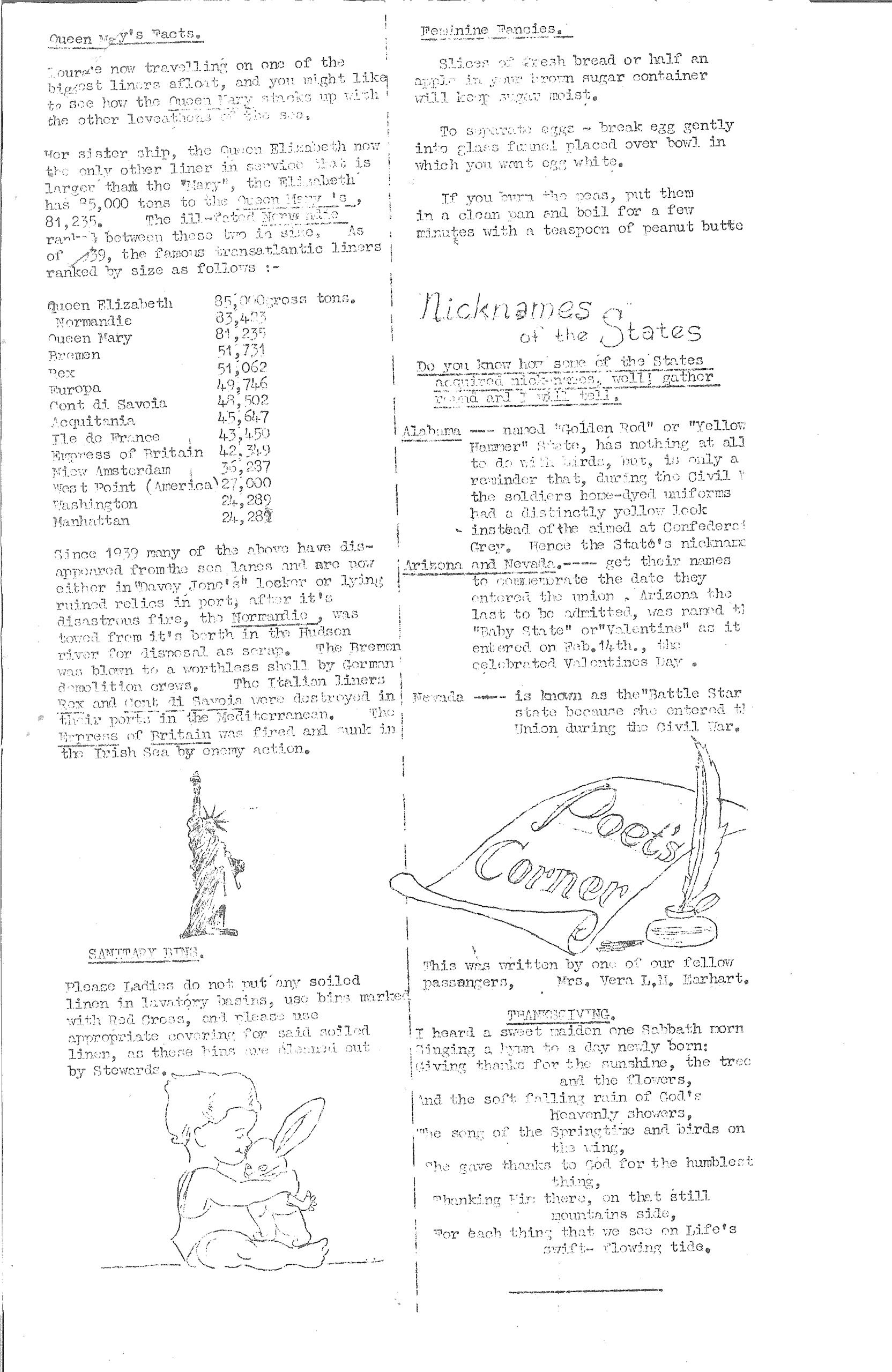
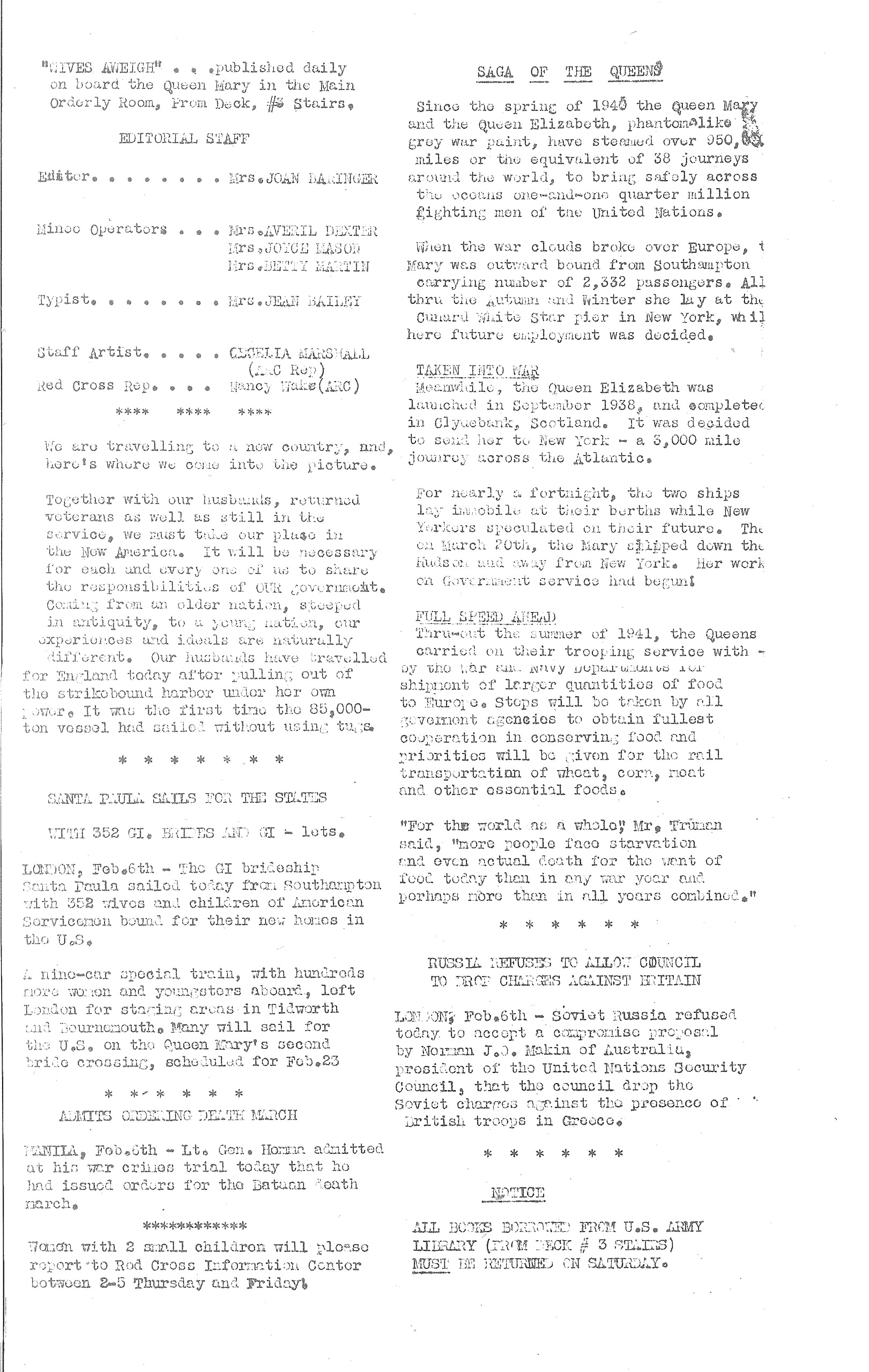
More Must-Reads from TIME
- Donald Trump Is TIME's 2024 Person of the Year
- Why We Chose Trump as Person of the Year
- Is Intermittent Fasting Good or Bad for You?
- The 100 Must-Read Books of 2024
- The 20 Best Christmas TV Episodes
- Column: If Optimism Feels Ridiculous Now, Try Hope
- The Future of Climate Action Is Trade Policy
- Merle Bombardieri Is Helping People Make the Baby Decision
Write to Lily Rothman at lily.rothman@time.com